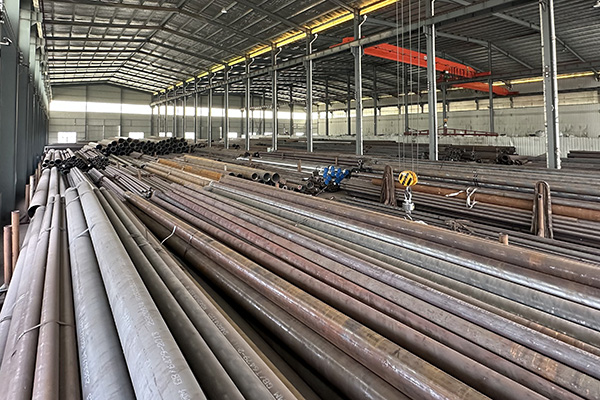

Causes of Surface Scars on Alloy Steel Pipes
Surface scars on alloy steel pipes are a common defect that can negatively impact appearance, mechanical properties, and corrosion resistance. These scars are usually linear or irregular marks or grooves on the pipe’s outer or inner surface. Understanding the causes of these surface imperfections is critical for improving manufacturing quality and reducing rework or rejection rates. The following are the primary causes of surface scars on alloy steel pipes:
1. Defects in Raw Materials
Surface imperfections may originate from the steel billet or round bar used in production. If the raw material has surface cracks, non-metallic inclusions, or decarburized layers, these defects can propagate during hot rolling or extrusion and manifest as scars on the finished pipe surface.
2. Improper Heating During Hot Rolling or Piercing
Inadequate or uneven heating of the billet can lead to oxidation, overheating, or surface burning. Excessive scale formation or thermal stress can cause the outer layer to flake off or crack, resulting in scars that persist throughout the rolling or piercing process.
3. Worn or Damaged Tooling
The use of worn-out rolls, mandrels, piercing tools, or dies can scratch or gouge the pipe surface during forming. Sharp edges or embedded particles on tooling surfaces can also imprint defects on the pipe’s surface under high pressure.
4. Improper Lubrication
Insufficient or contaminated lubrication during extrusion, drawing, or rolling can lead to excessive friction between the pipe and the tooling. This may cause galling, tearing, or localized overheating, all of which can create surface scars.
5. Foreign Matter on the Processing Line
Particles such as metal chips, scale, or sand left on conveyor rollers or forming machines can get pressed into the pipe surface. These embedded particles often create drag marks, scratches, or grooves.
6. Mechanical Damage During Handling
Improper handling during transportation, loading, or unloading can cause contact between pipes or with hard surfaces, leading to dents, scratches, or scoring. Lack of protective padding or careless stacking often contributes to this type of surface damage.
7. Inadequate Surface Treatment
If descaling, pickling, or shot blasting is not performed thoroughly after hot working, residual scale or oxides can remain and become a source of scarring during subsequent processing steps.
8. Defective Drawing or Straightening Processes
In cold drawing or straightening operations, excessive tension, misalignment, or improper die settings can lead to surface tears or longitudinal marks along the pipe body.
Conclusion
Surface scars on alloy steel pipes result from a combination of raw material quality, equipment condition, process control, and handling practices. Addressing these factors through quality inspections, equipment maintenance, and strict process management is essential to ensure smooth and defect-free pipe surfaces.
References:
ASTM A530/A530M – Standard Specification for General Requirements for Specialized Carbon and Alloy Steel Pipe
API RP 5L1 – Recommended Practice for Railroad Transportation of Line Pipe
ISO/TS 11960 – Petroleum and natural gas industries — Steel pipes for use as casing or tubing
ASM Handbook, Volume 5 – Surface Engineering





